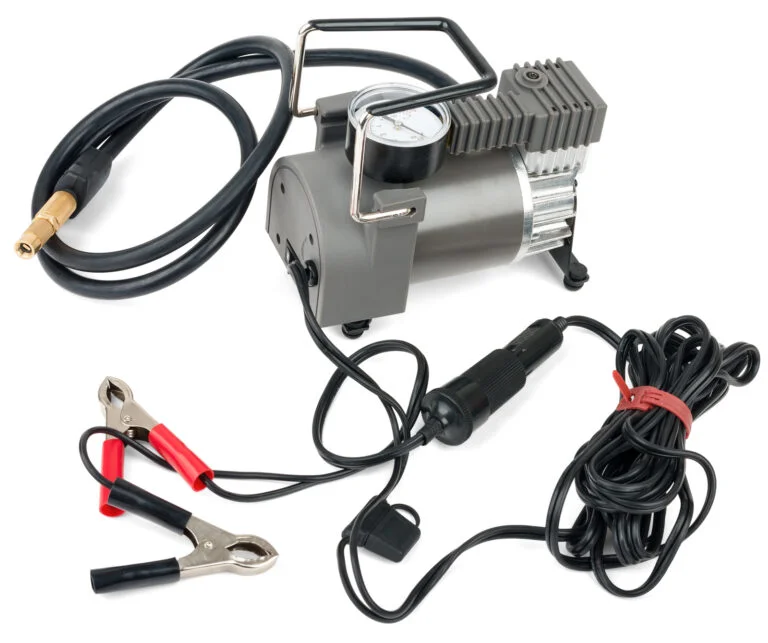Harness the Data: Data Logging System Essentials
Just as a fine-tuned engine propels a vehicle forward, data is the fuel driving modern performance optimization. This article will delve into the mechanics of data logging systems, uncovering their pivotal role in enhancing vehicle performance. From installation to interpretation, we'll navigate potential roadblocks and explore real-world applications. Ultimately, we provide a roadmap for those seeking to harness the power of data, transforming raw numbers into a vehicle for liberation and peak performance.
Key Takeaways
- Data logging systems collect and store data over time in various fields like environmental monitoring, machine condition monitoring, and process control.
- Data logging enhances vehicle performance by monitoring engine performance, tracking fuel efficiency, and detecting vehicle faults.
- Monitoring engine performance through data logging helps identify trends and potential issues, while fuel efficiency data enables optimization of driving techniques and engine parameters.
- Data logging systems play a crucial role in detecting vehicle faults by continuously monitoring and registering abnormalities in vehicle operations, recording them as error codes for analysis and necessary maintenance or repairs.
Understanding the Basics of Data Logging Systems
Beginning with an understanding of data logging systems, we delve into the fundamental principles and mechanisms that drive these crucial components of modern data management. A data logging system is an automated system that collects and stores data over a period of time. This system has found its application in various fields, such as environmental monitoring, machine condition monitoring, and process control, to name a few.
Performance gauges are integral to data logging systems. They provide quantitative measurements of key parameters and help in monitoring and optimizing the system's performance. They are critical in identifying anomalies in the system's operation, thereby enabling timely intervention and prevention of potential system failures.
Electronic stability control tuning is another vital aspect of data logging systems. This involves adjusting the electronic stability control system to ensure optimal system performance. The tuning is usually done by changing the system's parameters to meet specific performance requirements.
The Role of Data Logging in Vehicle Performance
Data logging plays a crucial role in enhancing vehicle performance, primarily through monitoring engine performance, tracking fuel efficiency, and detecting vehicle faults. By systematically recording these metrics, a comprehensive data log provides valuable insights into the vehicle's operational health and efficiency, thus facilitating preventative maintenance and ensuring optimal performance. Thus, the application of data logging in the automotive sector is not only instrumental in streamlining vehicle performance but also in minimizing breakdowns and enhancing fuel efficiency.
Monitoring Engine Performance
Throughout the lifespan of a vehicle, data logging plays a pivotal role in monitoring and optimizing engine performance. It provides imperative data on engine metrics, revealing performance trends, and identifying potential issues. The launch control system and launch assist technology, two pivotal components, are greatly enhanced by the use of data logging systems. Specifically, the launch control system benefits from detailed data on engine speed, throttle position, and wheel speed. This data can then be leveraged to optimize launch times, improving overall vehicle performance. Similarly, launch assist technology utilizes logged data to regulate torque and optimize acceleration. Thus, data logging is not just a passive recording tool, but an active participant in refining vehicle performance.
Fuel Efficiency Tracking
In the context of ongoing advancements in vehicle technology, the role of data logging systems in tracking and enhancing fuel efficiency has become increasingly significant. These systems meticulously record fuel consumption data, enabling engineers to dissect this information and identify areas for optimization. The integration of data loggers in vehicles provides real-time fuel efficiency insights, making it possible to adapt driving techniques or adjust engine parameters for improved fuel economy. In addition, the data collected serves as a vital resource for designing more fuel-efficient vehicles in the future. As we unlock the full potential of data logging systems, we open avenues for substantial fuel savings and environmental sustainability. Moving forward, the discussion will delve into how these systems aid in detecting vehicle faults.
Detecting Vehicle Faults
Beyond fuel efficiency, data logging systems also play a crucial role in detecting vehicle faults, providing invaluable support in maintaining optimal vehicle performance. These systems, through a continuous monitoring process, register abnormalities in the vehicle's operations. These could range from engine overheating, abnormal exhaust emissions to irregular tire pressure.
Data loggers, with their advanced diagnostic capabilities, identify these faults and record them as error codes. Technicians then analyze these codes, decipher the underlying issues and perform necessary maintenance or repairs. This proactive approach aids in preventing major failures, ensuring the vehicle's longevity, and optimizing overall performance. Thus, data logging systems serve as an indispensable tool in assuring vehicular health and performance.
Key Components of a Data Logging System
To fully understand the functioning of a data logging system, the analysis of its key constituents is imperative. These components, namely essential data logger parts, the selection of suitable sensors, and software and interface options, form the backbone of an efficient data logging system. Each of these elements has a significant impact on the system's operational efficiency and the accuracy of the data collected and stored.
Essential Data Logger Parts
With an understanding of the basic concept, let us delve into the key components of a data logging system, which form the foundation for efficient data management and analysis.
These essential parts include:
- Sensors: These are the primary data collection tools, directly interfacing with the environment or system under observation and translating physical phenomena into readable data.
- Data Logger Unit: This is the heart of the system, capturing, processing, and storing data from sensors. It also manages power supply and controls sampling rates.
- Software: Critical for data interpretation, it enables data visualization, analysis, and exportation in various formats for further use.
Understanding these parts will liberate your approach to data logging systems, enabling you to optimize and streamline your data management processes effectively.
Choosing Suitable Sensors
In the context of building an effective data logging system, the selection of appropriate sensors is a critical decision that directly impacts the system's efficiency and accuracy. The choice of sensors should align with the nature of data intended for collection, whether it be temperature, pressure, humidity, or light intensity, among other variables. It's crucial to consider the sensitivity, precision, and reliability of the sensor, along with its compatibility with the logger. Factors such as the operating environment, ease of installation, and maintenance requirements also play significant roles. Finally, the cost-effectiveness should be evaluated, ensuring a balance between quality and affordability. With the right sensors in place, we can now turn our attention to the software and interface options.
Software and Interface Options
After securing suitable sensors, the next step in the process of setting up a data logging system is to explore the software and interface options, both of which are key components that can significantly influence the system's performance over time.
These options can be broadly categorized into:
- Data Acquisition Software: This software can process, analyze, and store data from the sensors. It should be able to handle large datasets efficiently and provide reliable and accurate results.
- User Interface: It should be user-friendly and intuitive, enabling easy setup, monitoring, and troubleshooting.
- Integration Capability: The software should easily integrate with other systems and platforms, enhancing its functionality and usability.
The choice of software and interface can be the difference between a functional and a high-performing data logging system.
Steps to Install a Data Logging System in Your Vehicle
To enhance your vehicle's performance monitoring, installing a data logging system is a crucial step that requires careful planning and execution. The process begins with identifying the best data logging system that suits your vehicle and your specific needs. This includes considering factors such as the number of channels, the frequency of data logging, and the type of data you wish to capture. Once you have selected an appropriate system, carefully read the manufacturer's installation guide to understand the necessary tools and procedures.
Next, locate a suitable position in your vehicle for the logger. Ensure it is in an area that doesn't interfere with the vehicle's operation, yet easily accessible for maintenance. Connect the logger to the vehicle's power supply and to the sensors that will be used to gather data. Regular testing and calibration is vital to ensure the system is working accurately and efficiently.
With a data logging system in place, you have started a journey towards improved vehicle performance and better decision-making. As we transition to the next section, we will focus on the critical task of how to interpret data from your logging system.
How to Interpret Data From Your Logging System
Understanding and interpreting the vast amount of data generated by your logging system can significantly enhance your decision-making process and improve vehicle performance. The key is to differentiate between noise and actionable data, which can guide you to make informed decisions.
To interpret the data from your logging system effectively, consider the following three strategies:
- Data Visualization: Use graphical tools to visualize the data. This allows you to see patterns, outliers, and trends more clearly.
- Statistical Analysis: Apply statistical methods to understand the data's underlying distributions and relationships. This can yield insights that raw data alone cannot provide.
- Machine Learning Algorithms: Leverage machine learning techniques to predict future behaviors based on historical data.
Keep in mind that a single data point in isolation might not be helpful. It is the patterns and trends across multiple data points that provide valuable insights. Pay attention to the context in which the data is generated and used. Remember, the goal is not just to collect data but to derive meaningful information that can drive decision-making and enhance performance. By mastering these techniques, you can truly harness the power of your data logging system.
Advantages of Using a Data Logging System
The implementation of a data logging system can yield numerous advantages, among which boosting operational efficiency, improving data accuracy, and facilitating real-time monitoring stand prominent. By enhancing operational efficiency, such systems streamline the process of collecting, storing, and analyzing data, thereby saving both time and resources. Concurrently, the improved data accuracy and real-time monitoring capabilities contribute to informed decision-making, risk minimization, and effective problem-solving.
Boosting Operational Efficiency
Enhanced operational efficiency is a significant advantage of utilizing a data logging system, providing businesses with the ability to streamline processes, reduce errors, and make data-driven decisions. This system is designed to capture, store and analyze data in real-time, which can be used to optimize operational efficiency.
- Process Streamlining: Through automated data collection and analysis, businesses can identify process bottlenecks and inefficiencies, thereby streamlining operations.
- Error Reduction: Data logging systems provide accurate and consistent data, reducing the chance of human error in data collection and management.
- Data-Driven Decision Making: The system enables businesses to make informed decisions based on concrete data, leading to improved productivity and cost savings.
In essence, a data logging system is an essential tool for businesses seeking to boost their operational efficiency.
Improving Data Accuracy
Amid the ever-growing reliance on data in various industries, data logging systems have emerged not only as a tool for streamlining processes, but also for improving data accuracy, an advantage that is paramount in the quest for reliable and robust decision-making.
| Advantages | Data Accuracy | Impact on Decision-Making |
|---|---|---|
| Reduction in Errors | High Accuracy | More Reliable Decisions |
| Real-time Updates | Timely Information | Swift Response to Changes |
| Automated Collection | Consistent Data | Avoids Bias and Assumptions |
| Scalability | Large Data Sets | Broad-based Analysis |
These systems automate the data collection process, reducing human errors that can compromise data integrity. The real-time updates enhance the timeliness of information, while scalability allows for the handling of large data sets. Now, let's delve into how data logging systems facilitate real-time monitoring.
Facilitating Real-time Monitoring
Undeniably, real-time monitoring through data logging systems presents a multitude of benefits, and not just in the realm of data accuracy, but also in terms of operational efficiency and strategic decision-making. These systems enable real-time capture and analysis of data, providing actionable insights that can significantly improve business operations.
- Operational Efficiency: Data logging systems streamline the process of collecting and analyzing data, thereby improving operational efficiency.
- Strategic Decision-Making: By providing real-time data, these systems support informed, timely decision-making, a strategic advantage in today's fast-paced business environment.
- Data Accuracy: Real-time monitoring reduces the chances of data errors, ensuring more accurate and reliable data.
With these benefits, data logging systems are not just a tool, but a strategic asset that can drive your business towards liberation.
Potential Challenges in Data Logging and How to Overcome Them
Navigating potential challenges in data logging requires a clear understanding of these obstacles and effective strategies to surmount them. One frequent challenge is data loss due to hardware failure, power outages or software errors. This problem may be mitigated by implementing redundancy in data storage and ensuring regular backups.
Another issue often encountered is the inaccuracy of data. This can be a result of poor calibration or faulty sensors. Regular maintenance and calibration of sensors, as well as using high-quality equipment, can significantly reduce these inaccuracies.
Data overload is another significant challenge, as the volume, velocity, and variety of data can overwhelm storage systems and make data analysis a daunting task. Utilizing efficient data compression techniques and implementing robust data management strategies can alleviate this issue.
Lastly, data security is an increasingly important concern. Unauthorized access, data leaks, or cyber-attacks can compromise the integrity of the data. Employing strong encryption methods, implementing stringent access controls, and regularly auditing the system for potential vulnerabilities can help to overcome this challenge.
Case Study: Successful Use of a Data Logging System
In the realm of advanced technology, the significant strides made by XYZ Corporation in the utilization of a data logging system offers an enlightening case study on the successful deployment and management of such systems. The corporation has seamlessly integrated data logging into their operations, using it as a crucial tool to capture, analyze and leverage vast amounts of data.
XYZ Corporation's success can be attributed to three key factors:
- Strategic Planning: The corporation meticulously planned the implementation process, identifying key areas where data logging could provide the most value, and ensuring the relevant personnel was trained accordingly.
- Robust Infrastructure: XYZ Corporation invested in a sturdy data logging infrastructure, designed to handle massive data sets, ensuring seamless data collection, storage, and analysis.
- Continuous Improvement: The corporation constantly reviews and improves their data logging system, based on feedback and evolving business needs.
This case study underscores the potential of data logging systems when deployed strategically. As technology continues to evolve, data logging systems will become increasingly crucial in helping businesses navigate the data-driven future. This case study serves as an inspiration for those seeking liberation through technology and data.
The Future of Data Logging in Vehicle Performance Enhancement
Harnessing the power of data logging for vehicle performance enhancement is rapidly becoming a pivotal trend, and this practice is set to redefine the future of vehicular advancements. Data logging systems in vehicles are being integrated with advanced technologies like artificial intelligence, machine learning, and predictive analytics to enhance vehicle performance. These systems are evolving from merely recording data to analyzing, interpreting, and making strategic decisions.
This evolution is guided by three key future aspects:
| Current State | Future State |
|---|---|
| Passive recording of technical data | Active analysis of multi-dimensional data |
| Limited to mechanical and electrical data | Including driver behavior and environmental data |
| Mainly used in research or high-performance vehicles | Commonplace in consumer vehicles for enhanced maintenance and safety |
These future aspects aim to maximize vehicle performance, safety, and efficiency. Here, the liberation comes from the ability to predict and prevent potential vehicle issues, resulting in a more empowered and informed user experience. This evolution also opens up new avenues for automakers to provide personalized, optimal driving experiences.
As we delve further into the world of data logging, the next section will deal with 'maintenance and troubleshooting of your data logging system'.
Maintenance and Troubleshooting of Your Data Logging System
Regularly performing a comprehensive range of maintenance tasks and troubleshooting techniques is key to ensuring optimal performance from your data logging system. Routine maintenance, such as system checks and software updates, helps prevent system disruptions, while troubleshooting techniques are essential to identify and fix issues that may arise.
A well-maintained and efficiently running data logging system not only ensures consistent and reliable data collection but also contributes to the overall efficiency and productivity of your operations.
Here are three critical considerations for maintaining and troubleshooting your data logging system:
- Regular system health checks: This involves routine inspections to detect any potential issues that might impede system performance.
- Software updates: Regularly updating the system software helps keep your data logging system compatible with the latest technological advancements and security protocols.
- Troubleshooting techniques: Adopting a systematic approach to identify, analyze, and address system issues is crucial. This involves understanding common issues, potential causes, and effective solutions.
Frequently Asked Questions
What Are Some Common Misconceptions About Data Logging Systems?
Common misconceptions about data logging systems include the belief that they are overly complex, expensive to implement, and only necessary for large-scale operations, all of which are not necessarily true in all circumstances.
How Has the Data Logging System Industry Evolved Over the Years?
The data logging system industry has significantly transformed, moving from manual data collection to advanced automated systems, integrating AI and machine learning for real-time, accurate data analysis, driving efficiency and informed decision-making.
Can Data Logging Systems Be Integrated With Other Vehicle Technologies?
Yes, data logging systems can be seamlessly integrated with other vehicle technologies. This integration optimizes performance and efficiency, offering real-time diagnostic capabilities while providing valuable data for analysis and predictive maintenance.
Are There Any Potential Legal or Privacy Issues Concerning the Use of Data Logging Systems in Vehicles?
Yes, potential legal and privacy issues may arise with the use of data logging systems in vehicles. These could include unauthorized access to personal data, issues around consent, and the misuse of recorded data.
What Are Some Industry-Specific Applications of Data Logging Systems Outside of Vehicle Performance Enhancement?
Data logging systems find industry-specific applications in healthcare for patient monitoring, in manufacturing for quality assurance, in agriculture for crop management, and in energy sectors for monitoring power usage and system performance.
Conclusion
In conclusion, data logging systems play an indispensable role in optimizing vehicle performance. By meticulously interpreting data, we can overcome challenges and enhance vehicle functions. As technology advances, the use of these systems will become increasingly prevalent. Regular maintenance and troubleshooting ensure the system's longevity, optimizing its benefits. This piece serves as a guide, illuminating the essentials of harnessing data through logging systems, a key player in the future of vehicle performance enhancement.







